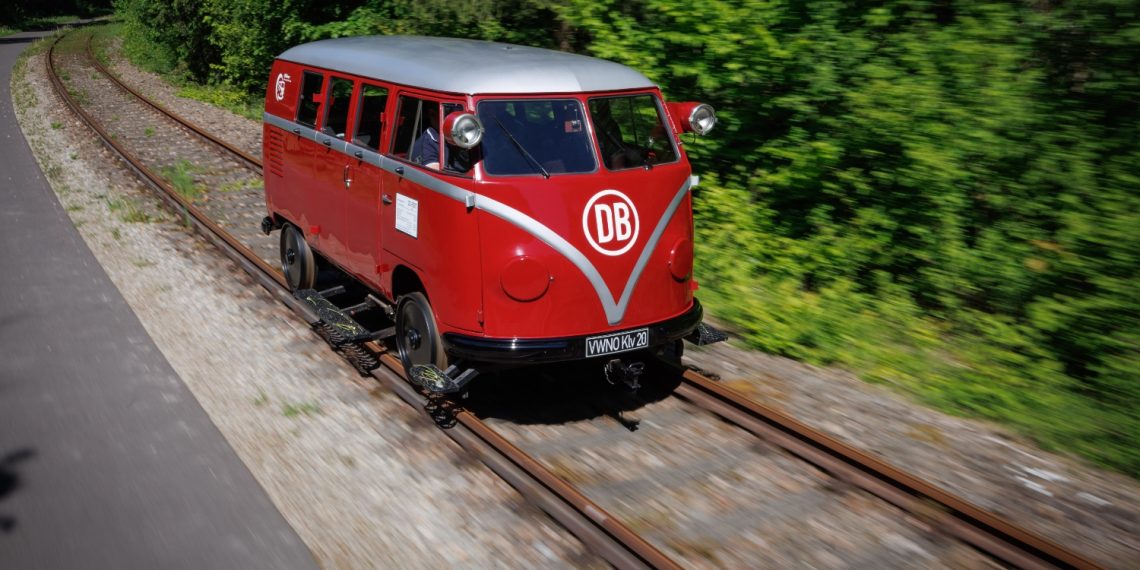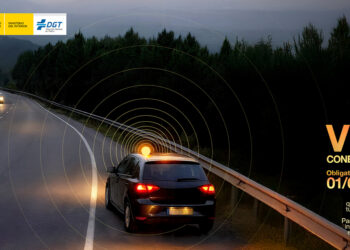The experts from the Classic Vehicles department of VW Commercial Vehicles (VWNO) have once again discovered a historic “Pão de Forma”.
After the Half-Track Fox, a “Pão de Forma” converted for off-road use with four axles and chain tracks at the rear, the department of the German brand has now revealed its latest discovery: the 1955 Kombi “Pão de Forma” – also known as Klv-20.
This model was not intended to replace any railway service with a road vehicle. In fact, it is a “Pão de Forma” that ran on rails, a mix of a train and a Volkswagen Kombi.
According to VW’s data, in 1954, the Deutsche Bundesbahn (German Federal Railways) was faced with the challenge of acquiring new compact service vehicles for its railways. Instead of developing a new vehicle from scratch, they transformed the versatile VW n Transporter into a railway draisine.
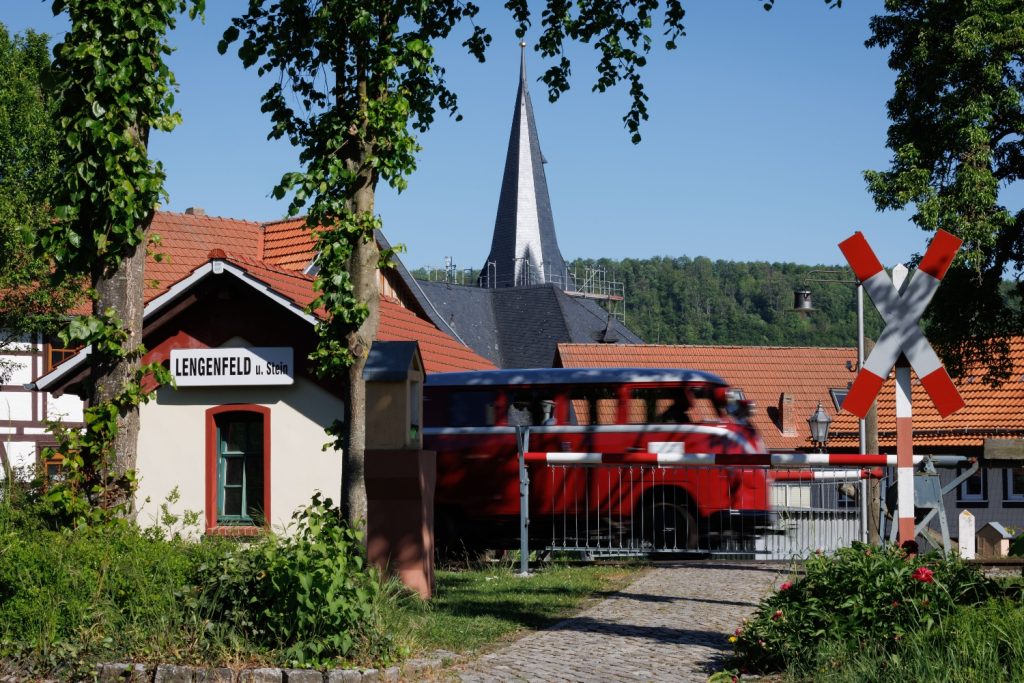
Two companies were tasked with building this compact vehicle with an internal combustion engine, which was designated Klv-20. Within a year, the companies Martin Beilhack and Waggon- und Maschinenbau GmbH from Donauwörth each transformed 15 units for railway use. The vehicle that is now part of the VWNO collection was manufactured by Beilhack in Rosenheim.
These “railway bread vans” were used to transport work teams to intervention sites. And the Klv-20 remained in service for a long time: it was only in the late 1970s that they were withdrawn from circulation by the Deutsche Bundesbahn. Currently, there are six vehicles in circulation, such as the VWNO’s Klv-20.
In order for the “railway bread van” to comply with the applicable standards for auxiliary railway vehicles, the front and rear lights were removed and these areas were covered with metal panels. The headlights necessary for railway vehicles were then installed in new positions: two white bulbs at the front and one red bulb at the rear.
The VWNO’s Klv-20 began its career at the railway depot in Plattling, Bavaria, and later was used at the signal maintenance depot in the same location.


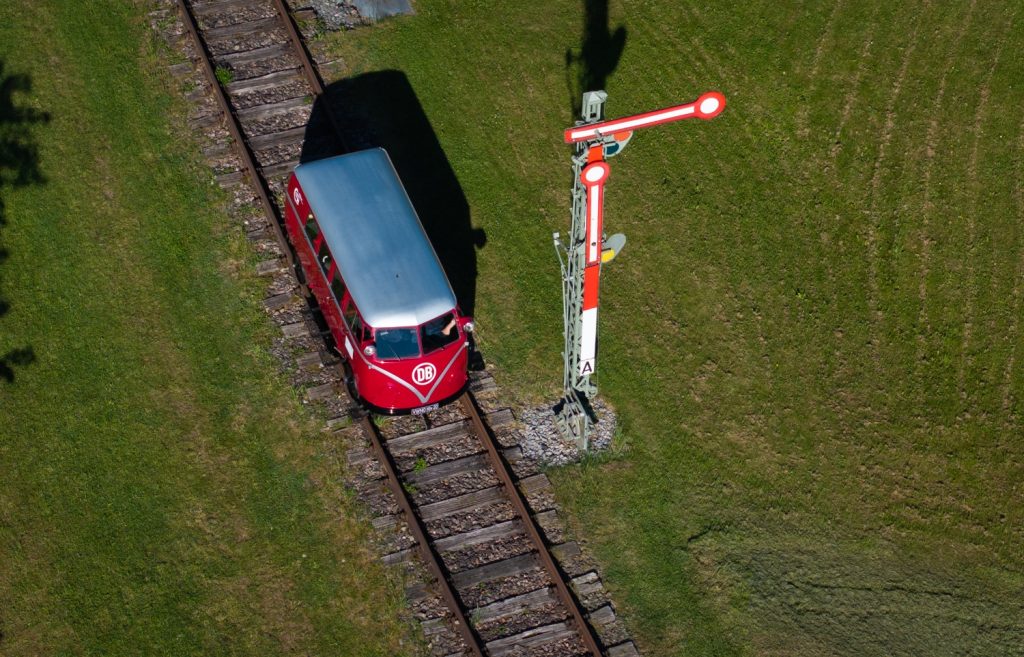
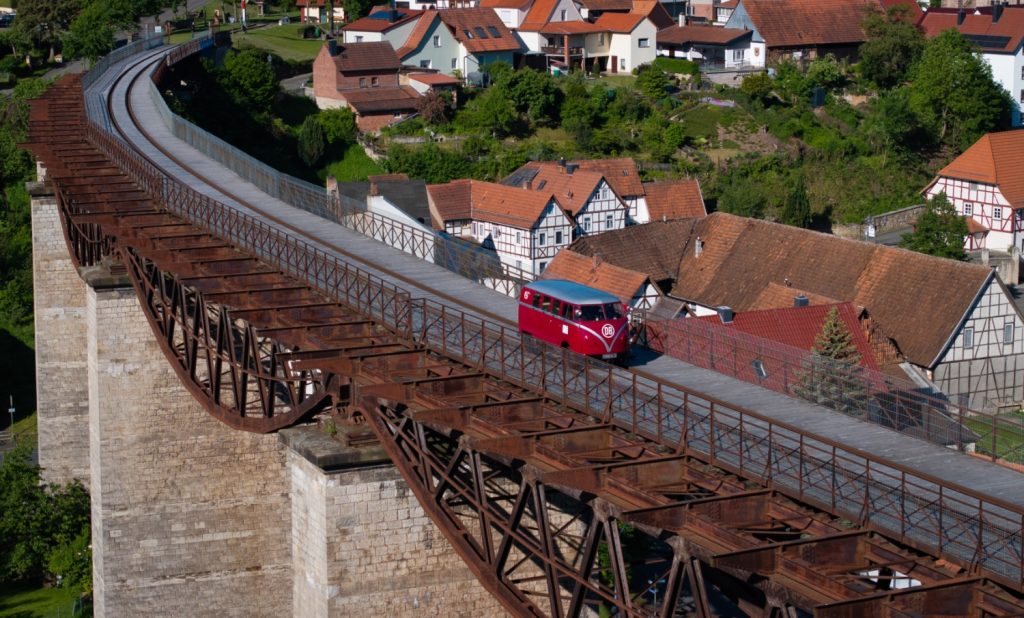
After being taken out of service in the 1970s, the Volkswagen draisine found a new home in the Palatinate region in southwest Germany. In 1988, it was acquired by a train collector from the state of Hesse. The “railway bread van” is now part of the classic vehicle collection of VW Commercial Vehicles in Hanover.
These vehicles, which we refer to as Type GBA 1, are equipped with a 28 hp four-cylinder four-stroke VW engine. The manual gearbox has four speeds and a reverse gear. Power is transmitted from the gearbox to the driving wheels through two lateral oscillating axles with articulated bodies.


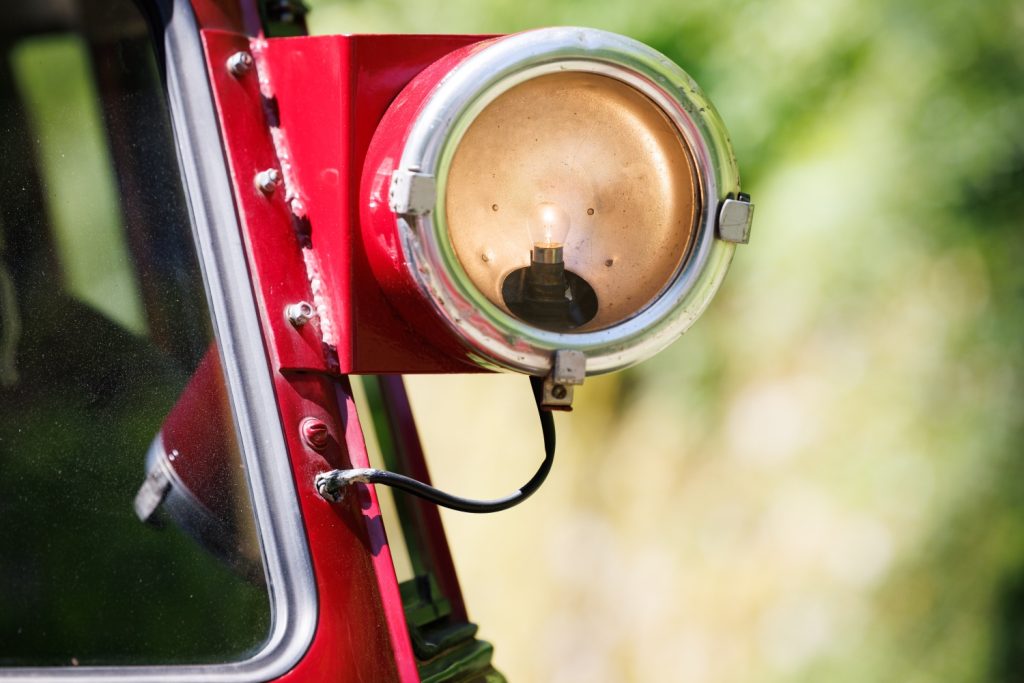
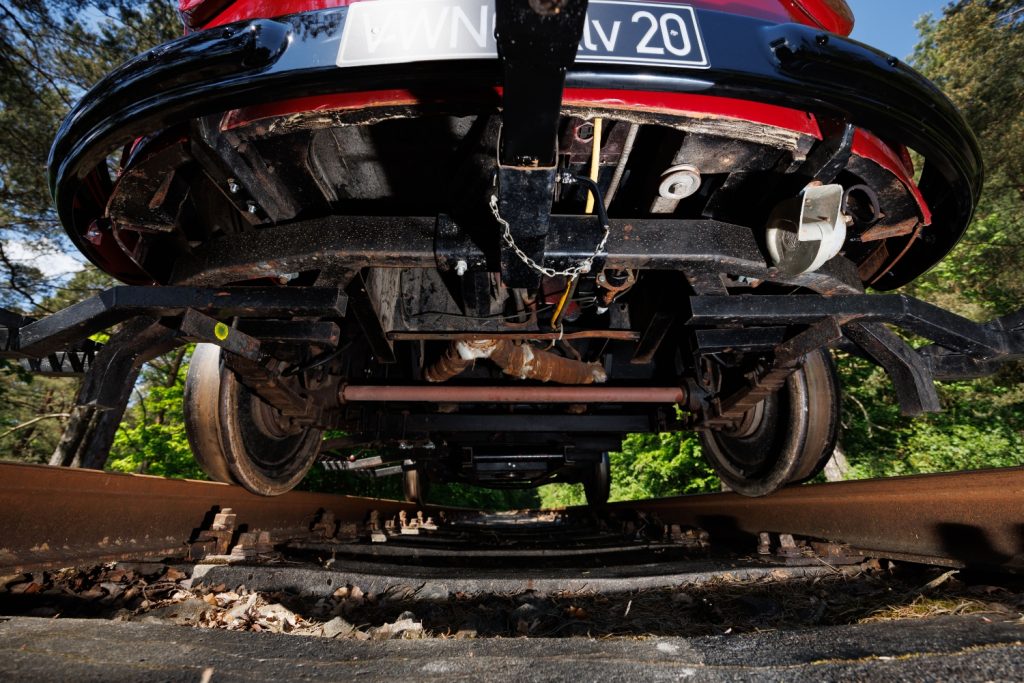
The powertrain is mounted on a welded chassis structure made of sturdy steel profiles; the structure also supports the wheel assemblies, which are well suspended and guided.
The wheels are made of steel and have a diameter of 550 mm. Rubber elements are installed between the rim and the wheel core, according to the “Bochumer Verein” system, which results in very effective vehicle noise damping. However, the vehicles can also be equipped with regular wheels. The axles operate with roller bearings.
All four wheels have internal brakes, which are activated by the brake pedal through a hydraulic system. A pair of wheels can also be mechanically locked by the lockable handbrake lever.
The bodywork is connected to the frame by rubber elements. It has three well-upholstered seats: one in the driver’s compartment with two seats and two in the passenger compartment with three seats each. The two seats in the passenger compartment can be easily removed so that the space can be used for transporting goods. The driver’s compartment has two doors, while the passenger or cargo compartment has a side door. The headlights, taillights, and interior lights are harmoniously integrated into the bodywork. The electric unit is located at the rear of the vehicle and is easily accessible from the outside through a separate door.

